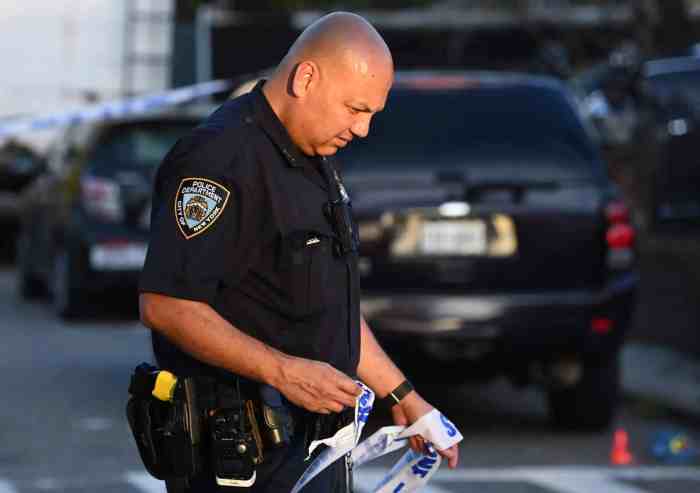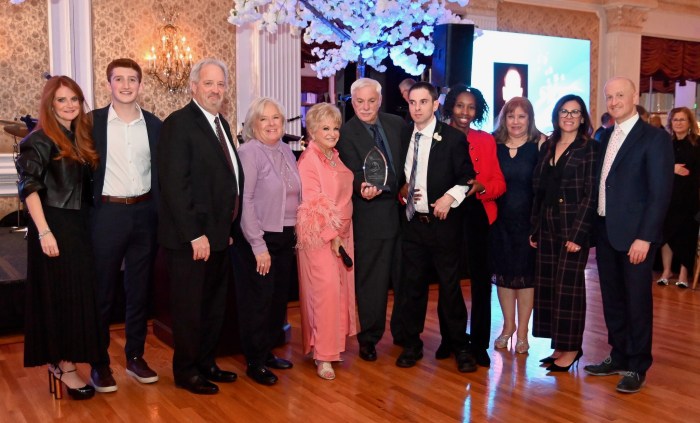
With the L train shutdown less than a year away, the MTA and the city are still seeking public input to finalize their travel alternatives.
Commuters and local residents filled a New School auditorium Wednesday evening to voice their concerns about the shutdown — a 15-month closure of L service to and through Manhattan beginning in April 2019. Roughly 225,000 commuters who ride the line under the East River each day will be displaced.
“Everyone is going to have a little shared sacrifice here. It’s going to be disruptive,” said DOT Commissioner Polly Trottenberg. “Our goal is to try and find the best balance we can, and now that we will be able hopefully to tweak it as we go if we get some things wrong, we will have the chance to go and try to fix it.”
The event set up a squaring off between two rival groups: Transportation Alternatives, the transportation nonprofit that has advocated for a 24-hour busway on 14th Street, and the 14th Street Coalition, a group of Manhattan residents that opposes such strict bus priority and is currently suing the agencies involved in an attempt to try and halt the project until environmental reviews on the impacts of the work are carried out.
The city plans to operate a “peak-hour” busway on Manhattan’s 14th Street, exclusively reserving the street for buses, pedestrians and local deliveries. The agencies are also counting on the Williamsburg Bridge to serve three shuttle bus routes, moving a clip of 70 buses per hour over the span. There are also plans for “peak-hour” restrictions across the bridge, limiting access to buses and cars with three or more passengers.
But the city and MTA have not yet defined how long the peak hour restrictions will last. The 14th Street Coalition believes even rush-hour limitations would negatively impact traffic congestion and mobility of residents, while Transportation Alternatives fears limiting traffic restrictions to those hours won’t be enough to properly accommodate the L train’s round-the-clock riders. Last week, de Blasio said instituting peak-hour restrictions was an appropriate balance.
Neal Goodwin, a supporter of the 14th Street Coalition, likened Transportation Alternatives’ advocacy to the controversial master planner Robert Moses’ work — bulldozing neighborhoods in the Bronx to build the Cross Bronx Expressway.
“I just find it so offensive [that] people who stand on the idea of fairness and considering everyone’s needs are so callously disinterested in the needs of people who use the neighborhood,” said Goodwin.
Attendees were far from a consensus on any ideas. Some feared a loss of parking or new dangers from an increase in cycling in the area — although most traffic deaths are caused by drivers’ behaviors. Others worried about the city and MTA presenting a watered down plan that would make streets less safe for pedestrians and cyclists.
On logistics of “peak hour” lane regulations on 14th Street/elsewhere and how the city will enforce those lanes, DOT Commissioner Trottenberg says, the city handles those sort of regulations now with its bus lanes, which mostly are not 24-hour lanes. pic.twitter.com/QxnD7JTNSA
— Vincent Barone (@vinbarone) May 9, 2018
Philip Leff, a volunteer with Transportation Alternatives, stressed that robust travel alternatives would actually benefit the neighborhood and limit congestion, while also making it possible for hundreds of thousands of commuters to get to their jobs each day.
Leff called the whole event a “charade.” The agencies have already spent two years doing public outreach on the shutdown, he said, and Goodwin’s comment has “no basis in reality.”
“The L train has no difference between peak hours and off-peak hours — all hours are peak hours on the L,” Leff said. “We’re going to need to move hundreds of thousands of people from all walks of life through a congested city and there’s just not an efficient way to do that with cars. We need exclusive bus lanes; we need protected bike lanes. It’s the only way to move people safely, quickly and efficiently.”
Both Trottenberg and MTA transit president Andy Byford signaled that any plans, once set, could be altered after the shutdown begins if they’re not effective enough.
“At the end of the day, a good plan has the flexibility to go both ways. It could either be scaled back, if we find that we’ve actually laid on too much provision, or if it’s too impactful,” Byford said. “Or we could add to it. It needs to be dynamic, and the plan is being designed to be just that.”




































